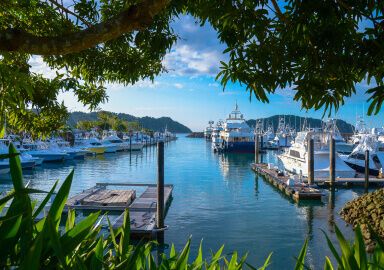Cero Mackerel
Cero, a smaller cousin of the Spanish and king mackerel, is a fairly easily caught, fun, tasty predator found along America’s eastern seaboard.
View 7 listings
7
listings
–
price starting from
6
countries
–
to the nearest trip
Where and When?
Cero are distributed along most of the warm water areas of the Atlantic Ocean from Massachusetts southwards to as far as Brazil. Interestingly enough, there are considerable gaps in their distribution, including much of the north-eastern coast of South America. The cero mackerel are also present around many offshore islands such as Barbados and throughout the Caribbean Sea. They are generally a fairly shallow water species and, over deeper waters, they rarely descend below 20 meters (65 ft.7in) in depth. Cero are often solitary predators that come together near shoals of silvery baitfish which, in turn, often form around structures. In more central areas of their distribution, such as off Florida, they can be caught throughout the year, with best times for fishing between October to December.
About Cero Mackerel
The cero mackerel, a.k.a. pintado or painted mackerel are not as large as some other members of the scomberomorini tribe, such as the Spanish and king mackerel, but they are usually described as fun to catch and delicious. As a typical mackerel, Cero (Scomberomorus regalis) are torpedo-shaped and very hydrodynamic in shape and, like a Spanish mackerel, they are vertically flattened making them light for the length of fish caught. The cero mackerel are silvery with darker spots on the flanks; the most conspicuous difference between the cero and other mackerel species is the yellow or orange stripe along the body.
They have many small, but very sharp teeth, for catching small fish. The teeth can also deliver a surprisingly painful bite to the unwary angler when unhooking. The official record stands at 1.83 meters (6ft 3in) with a mass of 7.8 kilograms (17,2lbs), but they have been reported to attain much larger sizes. The cero mackerel mature as they reach about 40 cm (1ft 3in); they often form shoals around solid structures such as reefs and wrecks where they predate on small fish.
How to Catch?
Although the cero mackerel often prefer shallower waters and being around structure, they are essentially an “open water” fish and nearly all angling is carried out from boats. They are often caught as a “by-catch” by sport anglers aiming for their larger cousins, the Spanish and king mackerel. If you go after the cero mackerel deliberately, it is good to use a nylon trace; however, due to their very sharp teeth combined with excellent eyesight, a thin terminal wire is best.
Cero may be caught by drifting or anchoring in suitable areas and also on artificial lures or natural baits. Chumming will usually help attract the fish right to the boat and may elicit a “feeding frenzy”. A fun and successful way of locating them is observing the sea for flocks of seabirds, which are often drawn to shoals of feeding cero mackerel.
As a sport-angling target they can be spectacular in the way they smash onto a lure or bait near the surface, often leaping right out of the water. They play well but, due to their thinness and resulting light weight, they are not very strong fighters. Light spinning tackle may be used, with about 25 lb. (12 kg) braid and the wire trace, in order to get the best sport out of Cero fishing. As the fish is “unregulated” in places such as Florida, fishing can be carried out anytime, almost anywhere and with no bag limit.







